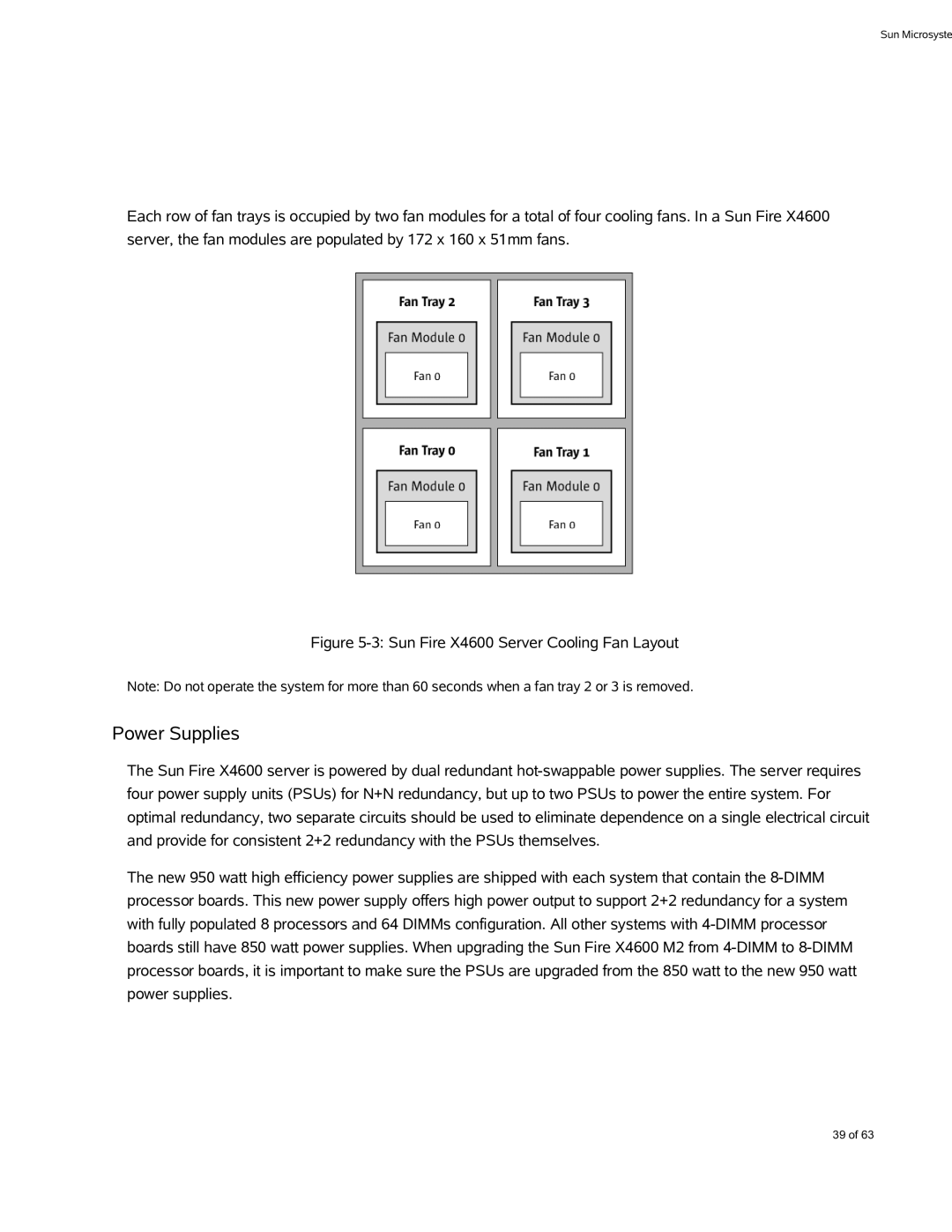X4600 M2, X4600 specifications
Sun Microsystems was a pioneering technology company that developed innovative hardware and software solutions, most notably in the server industry. Among their notable offerings were the Sun Fire X4600 and X4600 M2 servers. These high-performance systems were designed to meet the growing demands for scalability, flexibility, and reliability in enterprise-level computing environments.The Sun Fire X4600 was introduced as one of the first four-socket, x86 servers specifically optimized for demanding workloads. Powered by AMD Opteron processors, the X4600 was capable of supporting up to 64GB of memory, which was a significant advantage for memory-intensive applications. Its architecture enabled efficient parallel processing, making it an ideal choice for tasks such as database management and virtualization.
One of the defining characteristics of the X4600 was its modular design. The server featured a combination of innovative technologies that allowed it to be easily expanded and upgraded. This made it well-suited for businesses seeking a long-term investment in their IT infrastructure, as it provided room for growth without necessitating a complete system overhaul.
The X4600 M2, an evolution of the original X4600 model, offered further enhancements in performance and flexibility. It supported the next generation of AMD Opteron processors, providing increased processing power and efficiency. Additionally, the M2 model enhanced memory capacity, allowing for a maximum of 128GB of RAM, catering to the more urgent needs of resource-intensive applications.
One of the key technologies incorporated in the X4600 and X4600 M2 was the Sun Fire’s Advanced Lights Out Management (ALOM), which allowed for remote management capabilities. This feature enabled IT administrators to monitor system health and performance without being physically present, reducing downtime and improving overall system management.
Both servers also offered extensive storage options, combining numerous high-capacity drive bays to ensure ample disk space for data-heavy applications. Their effective cooling solutions made them suitable for even the most demanding environments, ensuring optimal performance and longevity.
In conclusion, Sun Microsystems' X4600 and X4600 M2 servers represented significant advancements in server technology. With their powerful architectures, flexible configurations, and innovative management features, they met the evolving demands of modern enterprise environments, solidifying their position as trusted solutions for robust computing needs.

